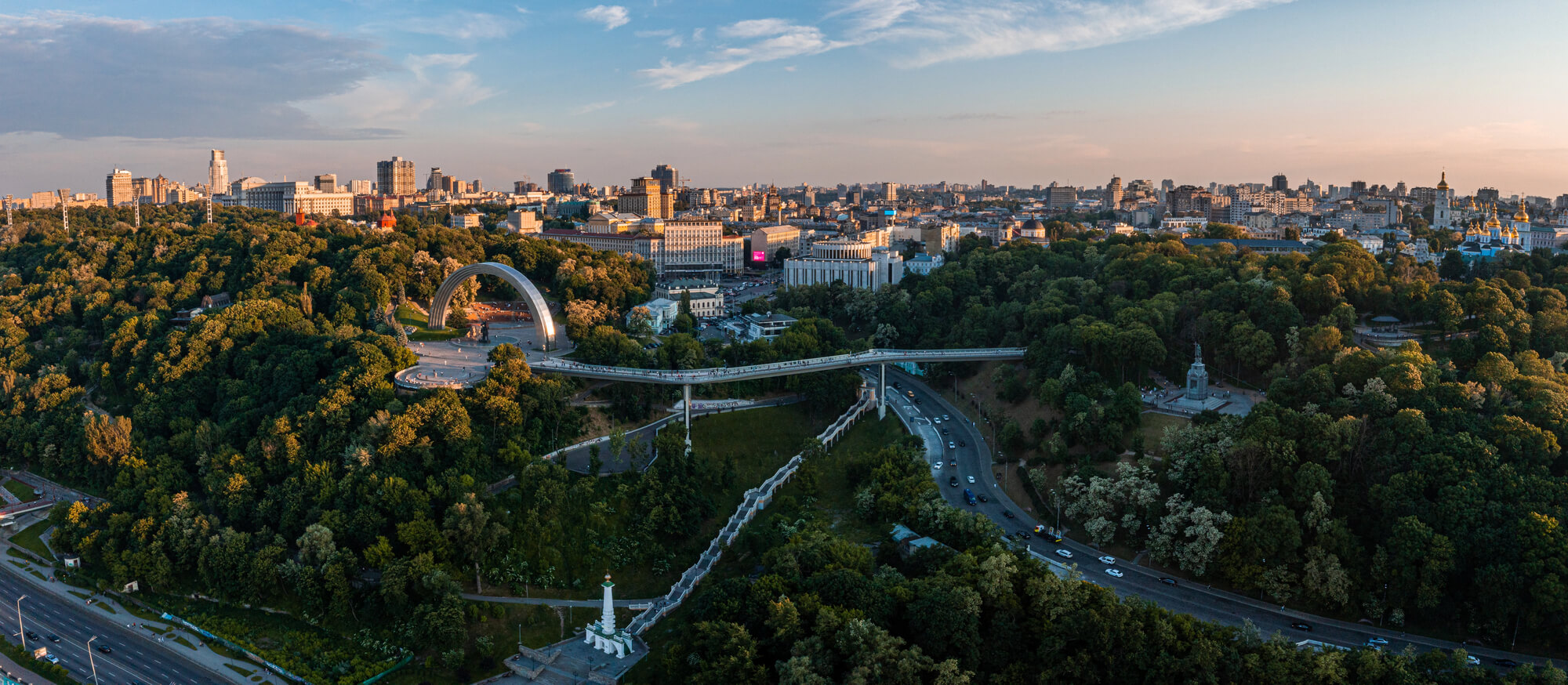According to estimates from the “Made in Ukraine” project, one hectare of industrial parks can generate up to 50 jobs, and every hryvnia of state investment brings in 5 to 6 hryvnias of private capital. This article will explore when industrial parks first emerged in Ukraine and how they operate today.
The term “industrial park” has been enshrined in Ukrainian law since 2013, but their rapid development only took off after the full-scale invasion. In 2024, a record 31 new parks were registered – more than double the previous highs of 13 in both 2017 and 2023. Of these, 60% are located on greenfield sites (undeveloped land), while the remaining 40% are on brownfield areas (former industrial zones now being given a second life).
Figure 1. Dynamics of industrial park development in Ukraine as of January 2025
* The statistics include only those industrial parks that have been officially registered by Ukraine’s Ministry of Economy. There are also unregistered parks – either still undergoing registration or previously removed from the registry. However, only those listed in the official registry are eligible for the fiscal and financial incentives provided under the industrial park’s law.
As of early 2025, Ukraine has registered 100 industrial parks covering nearly 3,000 hectares – an area roughly equivalent to that of the Zhytomyr region. Twelve factories have already been built within these parks, with another 13 currently under construction. Of the total, 8% of parks focus on agro-processing, 4% on machine-building, and 3% on wood processing, while the majority – 61% – are multi-purpose.
Two of the registered parks are located in the Donetsk region (which is currently experiencing active combat) and one in the Luhansk region, which remains under temporary occupation.
Figure 2. Geographic distribution of registered industrial parks in Ukraine as of January 2025
Not all registered industrial parks are fully operational – i.e., not all have a managing company, engineering infrastructure, at least one completed facility, and at least one functioning business. In 2024, 30% of parks were considered active, a significant improvement over the pre-war figure of just 7.5%.
Industrial parks can also be removed from the official registry – a mechanism introduced in 2021. Grounds for removal include the absence of a managing company within two years of registration, failure to submit reports to the Ministry of Economy twice in a row, or no participating businesses launching operations within three years. However, being delisted does not mean the park must shut down – it can continue operating but without access to state incentives. Furthermore, a park may reapply for registration just six months after removal. Systematic efforts to clean up the registry began only in 2025. In the first four months of the year, four parks lost their registered status, and the government is currently considering delisting another 15.
Since the start of the full-scale invasion, the number of registered industrial parks in Ukraine has grown by more than 50%. Businesses are using them to relocate operations, establish new production sites, and bring in partner companies. For example, an industrial park relocated from Kramatorsk to the Perechyn community in Zakarpattia in 2023 generated an additional UAH 102 million for the local budget and created over a thousand jobs.
Figure 3. Total investment volume by participants and other entities in industrial parks
Another factor driving the growth of industrial parks has been legislative reform. The original 2013 Law of Ukraine “On Industrial Parks” offered no real support mechanisms for new developments. The updated 2021 version introduced a range of incentives for industrial parks (more on this can be found in the Reform Index). Experts estimate that thanks to these benefits, investors can cut their capital expenditures by as much as 25% – a savings of anywhere from UAH 15 to UAH 60 million on average when building a facility within an industrial park.
Figure 4. Incentives for industrial parks provided under Ukrainian legislation since 2021
Fig.4, eng автор: Mariia Balytska
* Financial incentives only apply if sufficient budget funds are available
Source: “Made in Ukraine” Project
State support is aimed at both the managing companies and the businesses operating within industrial parks. The former receive non-repayable public funds on a co-financing basis to develop park infrastructure, while the latter can benefit from tax and customs incentives.
However, these incentives only began to be granted in 2024 – when, for the first time since 2013, the state budget allocated funds specifically for industrial park infrastructure, totaling UAH 1 billion. This became possible through the “Made in Ukraine” program, which promotes regional industrial development by co-financing the construction and modernization of facilities. The funding model is as follows: the state covers 50% of the project cost (up to UAH 150 million), and the industrial park’s managing company provides the remaining 50%. For de-occupied territories, the ratio shifts to 80% state funding and 20% from the managing company. In exchange for this support, the managing company, under the terms of the “Made in Ukraine” program and guidelines set by the Ministry of Economy, must complete projects within two years. Over the following three years, it is required to independently construct at least 5,000 square meters of industrial space and attract a minimum of two resident businesses to the park.
Although the co-financing mechanism only became operational in the summer of 2024, the government has already approved support for 15 industrial parks, totaling UAH 1.13 billion. Of this amount, UAH 925 million was allocated in 2024 for 13 parks, with two more scheduled to receive funding in 2025. The funds are being used to construct access roads and railway lines, install sewage systems, develop external water and electricity supply networks, and connect the parks to the national power grid. This financial support is critically important: as by the end of 2023, only 66% of the 73 registered industrial parks had access to road infrastructure, just 26–30% were connected to electricity, water, or gas networks, and only 19% had railway access.
Figure 5. Regional distribution of state support for industrial parks in 2024, million UAH
For 2025, the Government of Ukraine has allocated UAH 500 million in the state budget to support the creation and development of industrial parks.
In addition, as of early 2025, 43% of registered industrial parks were receiving support from local authorities through reduced land tax rates or discounted land lease payments. While such support is not mandatory for local communities, it offers clear advantages: establishing an industrial park increases employment opportunities for residents and boosts tax revenues for local budgets.
In 2023, the government developed the Industrial Parks Development Strategy for 2023–2030.
Fig_5, eng автор: Mariia Balytska
Such budget expenditures may bear fruit in the long run. For instance, industrial parks generate 22% of China’s GDP, over 60% of South Korea’s manufacturing output and exports, and more than a third of all exports from Turkey. Globally, there are numerous examples of both successful and failed industrial parks. Yet some fundamental questions remain: why are businesses reluctant to enter certain regions without state incentives? Will an industrial park have a lasting impact on the region where it’s located? And will investments in an industrial park ultimately pay off?
Providing targeted support to specific businesses can distort competition and create opportunities for corruption. For this reason, most countries refrain from offering direct budget subsidies to industrial parks, instead favoring approaches such as advisory support, preferential leasing of land or facilities, and utility discounts. Tax incentives are typically limited to tax holidays or exemptions from taxes and duties on the import of high-tech equipment.
In Ukraine, industrial parks remain in the early stages of development. According to 2022 data, exports from industrial parks accounted for just 0.0146% of the country’s total exports. As of July 1, 2024, the 77 registered industrial parks – spanning approximately 2,300 hectares – had generated 2,782 jobs. This equates to an average of 36 jobs per park and only 1.2 jobs per hectare, significantly below the target of 50 jobs per hectare previously projected by Yuliia Svyrydenko. However, as many parks registered since the onset of the full-scale invasion are still in the process of expanding their production capacity – with 13 factories currently under construction – these figures are expected to rise over time.
Photo: depositphotos.com/ua/
Attention
The author doesn`t work for, consult to, own shares in or receive funding from any company or organization that would benefit from this article, and have no relevant affiliations



